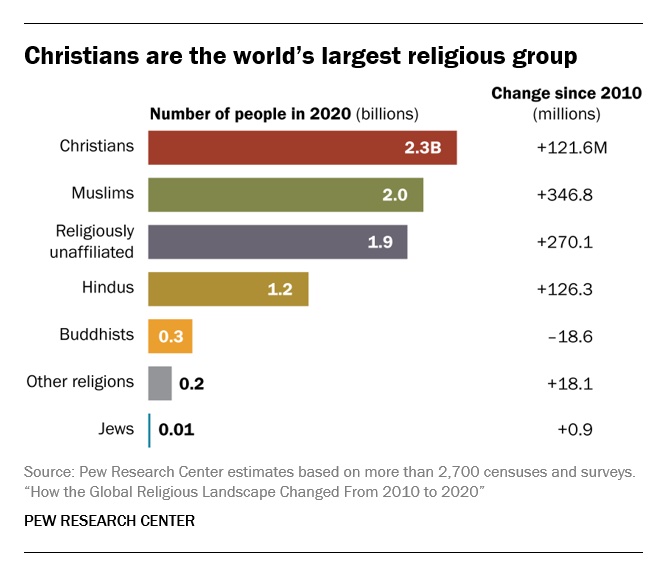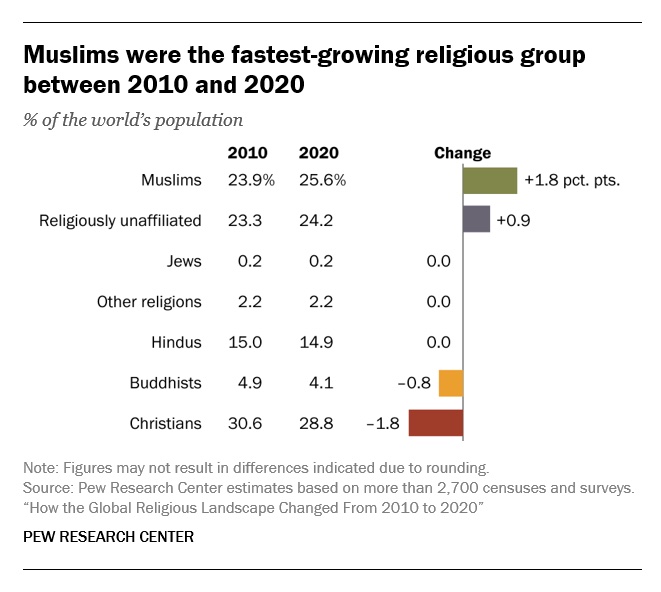Uncategorized
Hard-liner Bezalel Smotrich was just put in charge of Israel’s settlements. Here’s what that means.
(JTA) – Last week, Israeli Finance Minister Bezalel Smotrich got one of his longtime wishes: authority over the civilian life of settlers, and some Palestinians, in the West Bank. The role is a chance for Smotrich, a right-wing firebrand and staunch advocate of annexing settlements to Israel, to mold the territory according to his ideology.
But this week, the perils of the job also became clear: After a Palestinian gunman shot and killed two Israelis in the village of Huwara on Sunday, a mob of settlers rampaged in the village, burning cars and buildings and injuring residents.
In the days following, at least publicly, Smotrich has appeared conflicted over his response to the riots. He liked a tweet calling to “wipe out” the village, then issued his own tweet addressed to his “settler brothers” decrying the rampaging. Then he shared a third set of tweets that endorsed collective punishment — but not through mob violence — and compared the riot to nonviolent protests in Tel Aviv.
Later in the week, he sympathized with the rioters and their goal. On Tuesday, he published a lengthy Facebook post in which he called the rioters “a small group whose patience ran out and who acted inappropriately.” Part of him, he wrote, wanted “to identify with the pain and the anger and the feeling that it’s impossible to sit quietly any longer.”
On Wednesday, a journalist asked him to explain why he liked the tweet calling for the village to be “wiped out.” “Because I think the village of Huwara should be wiped out, I think that the state of Israel should do it.” A few hours later, he again walked back his statement: “To remove any doubt, in my words I did not mean wiping out the village of Huwara, but rather acting in a targeted way against terrorists and supporters of terror, and exacting a heavy price from them in order to return security to local residents.”
Sunday’s violence points to the contentious issues Smotrich will have to handle in his new role, coping with escalating violence as he and his partners seek to reshape life in the West Bank.
Both Smotrich and his ideological foes are portraying his new job as the harbinger of a sea change in the territory — one that will expand the settlements and make them more entrenched. Meanwhile, the current Israeli government, which includes Smotrich and his far-right allies, has promised to build and recognize more settlements.
“The transfer of civilian authority over the settlements to us, and the beginning of the process of normalizing settlements, are also a great and strategic achievement,” he wrote in the Facebook post on Tuesday. “Even if it takes time to ripen and change the rudder of the ship, it will lead, God willing, to a dramatic change.”
Here’s a rundown of who Smotrich is, what his new job involves, how it fits in with the Israeli government’s settlement plans, and what his limits are.
Who is Bezalel Smotrich, and what job did he just receive?
Smotrich, 43, is himself a settler and has served in Israel’s parliament, the Knesset, for nearly eight years. During that time, he’s been one of the most right-wing lawmakers in Knesset, and has faced blowback for comments denigrating Arab women and the LGBTQ community.
He has also spent years calling for the annexation of settlements and proposing legislation to that effect, to no avail. But his fortunes changed last year, when his party, Religious Zionism, won 14 seats, becoming the Knesset’s third-largest party.
The coalition agreement the party signed in December with Israeli Prime Minister Benjamin Netanyahu pledges to give Smotrich authority over civilian life in the settlements. Governing all aspects of civilian life in the settlements is currently the province of Defense Minister Yoav Galant, and he and Smotrich clashed over the past couple of months.
Smotrich made clear he was impatient to assume the new role, and was worried Netanyahu was balking. “Defense minister Galant’s disavowal of the unequivocal agreement, and the prime minister’s foot-dragging on the matter are unacceptable and will not be allowed to continue,” he wrote on Twitter on Feb. 15.
But Netanyahu fulfilled the coalition agreement on Thursday, and in a deal signed by Netanyahu, Smotrich and Galant, Smotrich was handed authority over day-to-day affairs in the settlements. He tweeted that the deal entailed “A holiday for the residents of Judea and Samaria,” the Israeli government’s term for the West Bank.
Does that mean Smotrich is about to annex the settlements to Israel?
No. The agreement explicitly counts out annexation, and Smotrich was at pains in December to assure Americans, in a Wall Street Journal op-ed, that annexation was not happening in the immediate future.
But Smotrich is now in charge of life in Area C of the West Bank, which makes up the bulk of the territory. All of the Israeli settlements are in Area C, where Israel has full control over civilian affairs. (The Palestinian Authority governs civilian life in Areas A and B, which comprise 40% of the West Bank and include the majority of the territories’ Palestinians.)
That is why critics of Netanyahu’s government are claiming that an annexation plan is at the heart of Netanyahu’s agreement with Smotrich. Michael Sfard, a prominent Israeli human rights lawyer, wrote that Smotrich is now effectively “the governor of the West Bank,” because he will be able to largely erase legal boundaries between the settlements and Israel’s recognized borders.
“Today the government of Israel has taken an action which entails de jure annexation of the West Bank,” wrote in posts on social media. “Transferring powers to Israeli civilian hands is an act of de jure annexation because it entails removing power from the occupying military and placing it directly in the hands of the government — this is an expression of sovereignty.”
Who’s in charge of Israel’s West Bank policy?
The particulars of the new arrangement in the West Bank, according to the deal signed on Thursday, are complex and a bit confusing. Smotrich is responsible for land use by Israelis and Palestinians in Area C, but it’s not clear if he has authority over Palestinian freedom of movement into and out of the area. His full responsibilities are listed in annexes not made public. The military, meanwhile, retains the authority to evacuate illegally built settlement outposts, though Smotrich may be able to stall that process.
That means it’s not clear who’s on top, except for a provision that makes Netanyahu the arbiter of any disputes between Smotrich and Galant, or Smotrich and the military.
The agreement does pledge to erase divisions between Israel and the Jewish settlements. It says Smotrich will launch an initiative called “Equality of Citizenship” that will “improve and streamline services in Judea and Samaria” through Israeli government ministries — that is, not via the military that has been in charge of such matters for more than half a century.
How is the U.S. responding?
The Biden administration, which has otherwise maintained friendly engagement with Netanyahu’s new government, had reportedly pressured him to renege on the new job for Smotrich. Biden officials found an ally on that issue in Israel’s defense establishment, which also was loath to hand over any degree of control to Smotrich, Axios reported.
And confusion in the chain of command when it comes to dismantling settlements may prompt the Biden administration to intervene, said Daniel Kurtzer, a former U.S. ambassador to Israel.
“The critical issues that we need to look at, they’re happening all over the place, whether it’s the transfer of authority from the Minister of Defense to Minister Smotrich for control over the civil administration, whether it’s the regularization of these outposts or their legalization,” said Kurtzer, who was speaking in a Zoom call last week organized by the Jewish Democratic Council of America.
Criticism also came from Israel’s opposition. Benny Gantz, a former defense minister and IDF chief of staff, tweeted out a confusing flow chart of the new division of responsibilities between Smotrich and Galant.
“This doesn’t look like a chain of command,” he wrote. “This looks like a labyrinth that endangers Israel’s security.”
What’s next?
Smotrich has already said he plans to accelerate the building of Jewish settlements and limit building by Palestinians in Area C. Palestinians say they build without permits in the area because the Israeli authorities rarely grant building permits. That’s unlikely to change now.
On Tuesday, Smotrich pledged that an illegal settlement that has repeatedly been dismantled will be rebuilt and recognized by the government. And his first comment after the agreement was reached was to reiterate his pledge to limit Palestinian rights.
He said, “We will act with determination to stop the illegal Arab takeover of open lands in Judea and Samaria.”
—
The post Hard-liner Bezalel Smotrich was just put in charge of Israel’s settlements. Here’s what that means. appeared first on Jewish Telegraphic Agency.
Uncategorized
How the Global Religious Landscape Changed from 2010 to 2020

Muslims grew fastest; Christians lagged behind global population increase
• Christians are the world’s largest religious group, at 28.8% of the global population. They are a majority everywhere except the Asia-Pacific and Middle East-North Africa regions. Sub-Saharan Africa has surpassed Europe in having the largest number of Christians. But Christians are shrinking as a share of the global population, as millions of Christians “switch” out of religion to become religiously unaffiliated.

• Muslims are the world’s second-largest religious group (25.6% of the world’s population) and the fastest-growing major religion, largely due to Muslims’ relatively young age structure and high fertility rate. They make up the vast majority of the population in the Middle East-North Africa region. In all other regions, Muslims are a religious minority, including in the Asia-Pacific region (which is home to the greatest number of Muslims).

• The religiously unaffiliated population is the world’s third-largest religious category (24.2% of the global population), after Christians and Muslims. Between 2010 and 2020, religiously unaffiliated people grew more than any group except Muslims, despite their demographic disadvantages of an older age structure and relatively low fertility. The unaffiliated made up a majority of the population in 10 countries and territories in 2020, up from seven a decade earlier.
• Hindus are the fourth-largest religious category (14.9% of the world’s population), after Christians, Muslims and religiously unaffiliated people. Most (99%) live in the Asia-Pacific region; 95% of all Hindus live in India alone. Between 2010 and 2020, Hindus remained a stable share of the world’s population because their fertility resembles the global average, and surveys indicate that switching out of or into Hinduism is rare.
• Buddhists (4.1% of the world’s population) are the only group in this report whose number declined worldwide between 2010 and 2020. This was due both to religious disaffiliation among Buddhists in East Asia and to a relatively low birth rate among Buddhists, who tend to live in countries with older populations. Most of the world’s Buddhists (98%) reside in the Asia-Pacific region, the birthplace of Buddhism.
• Jews, the smallest religious group analyzed separately in this report (0.2% of the world’s population), lagged behind global population growth between 2010 and 2020 – despite having fertility rates on par with the global average – due to their older age structure. Most Jews live either in North America (primarily in the United States) or in the Middle East-North Africa region (almost exclusively in Israel).
These are among the key findings of a Pew Research Center analysis of more than 2,700 censuses and surveys, including census data releases that were delayed due to the coronavirus pandemic. This report is part of the Pew-Templeton Global Religious Futures project, which analyzes global religious change and its impact on societies around the world. Funding for the Global Religious Futures project comes from The Pew Charitable Trusts and the John Templeton Foundation.
Uncategorized
Antisemitism in some unlikely places in America

By HENRY SREBRNIK Antisemitism flourishes in a place where few might expect to confront it – medical schools and among doctors. It affects Jews, I think, more emotionally than Judeophobia in other fields.
Medicine has long been a Jewish profession with a history going back centuries. We all know the jokes about “my son – now also my daughter – the doctor.” Physicians take the Hippocratic Oath to heal the sick, regardless of their ethnicity or religion. When we are ill doctors often become the people who save us from debilitating illness and even death. So this is all the more shocking.
Yes, in earlier periods there were medical schools with quotas and hospitals who refused or limited the number of Jews they allowed to be affiliated with them. It’s why we built Jewish hospitals and practices. And of course, we all shudder at the history of Nazi doctors and euthanasia in Germany and in the concentration camps of Europe. But all this – so we thought – was a thing of a dark past. Yet now it has made a comeback, along with many other horrors we assume might never reappear.
Since the Hamas attack on Israel on October 7, 2023, there has been a resurgence of antisemitism, also noticeable in the world of healthcare. This is not just a Canadian issue. Two articles on the Jewish website Tablet, published Nov. 21, 2023, and May 18, 2025, spoke to this problem in American medicine as well, referencing a study by Ian Kingsbury and Jay P. Greene of Do No Harm, a health care advocacy group, based on data amassed by the organization Stop Antisemitism. They identified a wave of open Jew-hatred by medical professionals, medical schools, and professional associations, often driven by foreign-trained doctors importing the Jew-hatred of their native countries, suggesting “that a field entrusted with healing is becoming a licensed purveyor of hatred.”
Activists from Doctors Against Genocide, American Palestinian Women’s Association, and CODEPINK held a demonstration calling for an immediate cease-fire in Gaza at the Hart Senate Office Building in Washington, D.C., Nov. 16, 2023, almost as soon as the war began. A doctor in Tampa took to social media to post a Palestinian flag with the caption “about time!!!” The medical director of a cancer centre in Dearborn, Michigan, posted on social media: “What a beautiful morning. What a beautiful day.” Even in New York, a physician commented on Instagram that “Zionist settlers” got “a taste of their own medicine.” A Boston-based dentist was filmed ripping down posters of Israeli victims and a professor at the University of Pennsylvania Perelman School of Medicine did the same. Almost three-quarters of American medical associations felt the need to speak out on the war in Ukraine but almost three-quarters had nothing to say about the war in Israel.
Antisemitism in academic medical centres is fostering noxious environments which deprive Jewish healthcare professionals of their civil right to work in spaces free from discrimination and hate, according to a study by the Data & Analytics Department of StandWithUs, an international, non-partisan education organization that supports Israel and fights antisemitism.
“Academia today is increasingly cultivating an environment which is hostile to Jews, as well as members of other religious and ethnic groups,” StandWithUs director of data and analytics, and study co-author, Alexandra Fishman, said on May 5 in a press release. “Academic institutions should be upholding the integrity of scholarship, prioritizing civil discourse, rather than allowing bias or personal agendas to guide academic culture.”
The study, “Antisemitism in American Healthcare: The Role of Workplace Environment,” included survey data showing that 62.8 per cent of Jewish healthcare professionals employed by campus-based medical centres reported experiencing antisemitism, a far higher rate than those working in private practice and community hospitals. Fueling the rise in hate, it added, were repeated failures of DEI (diversity, equity, and inclusion) initiatives to educate workers about antisemitism, increasing, the report said, the likelihood of antisemitic activity.
“When administrators and colleagues understand what antisemitism looks like, it clearly correlates with less antisemitism in the workplace,” co-author and Yeshiva University professor Dr. Charles Auerbach reported. “Recognition is a powerful tool — institutions that foster awareness create safer, more inclusive environments for everyone.”
Last December, the Data & Analytics Department also published a study which found that nearly 40 per cent of Jewish American health-care professionals have encountered antisemitism in the workplace, either as witnesses or victims. The study included a survey of 645 Jewish health workers, a substantial number of whom said they were subject to “social and professional isolation.” The problem left more than one quarter of the survey cohort, 26.4 per cent, “feeling unsafe or threatened.”
The official journal of the Alliance for Academic Internal Medicine concurs. According to “The Moral Imperative of Countering Antisemitism in US Medicine – A Way Forward,” by Hedy S. Wald and Steven Roth, published in the October 2024 issue of the American Journal of Medicine, increased antisemitism in the United States has created a hostile learning and practice environment in medical settings. This includes instances of antisemitic behaviour and the use of antisemitic symbols at medical school commencements.
Examples of its impact upon medicine include medical students’ social media postings claiming that Jews wield disproportionate power, antisemitic slogans at the University of California, Los Angeles (UCLA) David Geffen School of Medicine, antisemitic graffiti at the University of California, San Francisco (UCSF) Cancer Centre, Jewish medical students’ exposure to demonization of Israel diatribes and rationalizing terrorism; and faculty, including a professor of medicine at UCSF, posting antisemitic tropes and derogatory comments about Jewish health care professionals. Jewish medical students’ fears of retribution, should they speak out, have been reported. “Our recent unpublished survey of Jewish physicians and trainees demonstrated a twofold increase from 40% to 88% for those who experienced antisemitism prior to vs after October 7,” they stated.
In some schools, Jewish faculty are speaking out. In February, the Jewish Faculty Resilience Group at UCLA accused the institution in an open letter of “ignoring” antisemitism at the School of Medicine, charging that its indifference to the matter “continues to encourage more antisemitism.” It added that discrimination at the medical school has caused demonstrable harm to Jewish students and faculty. Student clubs, it said, are denied recognition for arbitrary reasons; Jewish faculty whose ethnic backgrounds were previously unknown are purged from the payrolls upon being identified as Jews; and anyone who refuses to participate in anti-Zionist events is “intimidated” and pressured.
Given these findings, many American physicians are worried not only as Jewish doctors and professionals, but for Jewish patients who are more than ever concerned with whom they’re meeting. Can we really conceive of a future where you’re not sure if “the doctor will hate you now?”
Henry Srebrnik is a professor of political science at the University of Prince Edward Island.
Uncategorized
The 2025 Toronto Walk (and talk ) for Israel

By GERRY POSNER There are walks and then there are walks. The Toronto UJA Walk for Israel on May 25, 2025 was one of a kind, at least as far as Canada and Jews are concerned. The number of people present was estimated to be 56,000 people or 112,000 total shoes. (How they get to that number is bewildering to me, since there is no one counting). This was 6,000 more than last year. Whether it is true or not, take it from me, it was packed. The synagogues in Canada should be so fortunate to get those numbers in total on High Holidays. The picture here gives you a sense of the size of the crowd.

This was my first walk in Toronto for Israel and I was with my granddaughter, Samantha Pyzer (not to forget her two friends whom she managed to meet at the site, no small feat, even with iPhones as aids). The official proceedings began at 9:00 a.m. and the walk at 10:00 a.m. There was entertainment to begin with, also along the way, and at the finish as well. The finish line this year was the Prosserman Centre or the JCC as it often called. The walk itself was perhaps 4 kilometres – not very long, but the walking was slow, especially at the beginning. There were lots of strollers, even baby carriages, though I did not see any wheelchairs. All ages participated on this walk. I figured, based on what I could see on the faces of people all around me that, although I was not the oldest one on the walk, I bet I made the top 100 – more likely the top 20.
What was a highlight for me was the number of Winnipeggers I met, both past and present. Connecting with them seemed to be much like a fluke. No doubt, I missed la lot of them, but I saw, in no particular order (I could not recall the order if my life depended on it): Alta Sigesmund, (who was, a long time ago, my daughter Amira’s teacher), Marni Samphir, Karla Berbrayer and her husband Dr. Allan Kraut and family. Then, when Samantha and I made it to the end and sat down to eat, I struck up a conversation with a woman unknown to me and as we chatted, she confirmed her former Winnipeg status as a sister-in- law to David Devere, as in Betty Shwemer, the sister of Cecile Devere. I also chanced upon Terri Cherniack, only because I paused for a moment and she spotted me. As we closed in near the finish, I met ( hey were on their way back), Earl and Suzanne Golden and son Matthew, as well as Daniel Glazerman. That stop caused me to lose my granddaughter and her pals. Try finding them amid the noise and size of the crowd – but I pulled it off.

As I was in line to get food, I started chatting with a guy in the vicinity of my age. I dropped the Winnipeg link and the floodgates opened with “ Did I know Jack and Joanie Rusen?” So that was an interesting few minutes. And I was not too terribly surprised to come across some of my Pickleball family. All of these meetings, along with spotting some of my sister’s family and other cousins, were carried on with the sound of the shofar as we moved along the way. In short, this was a happening. Merchants selling a variety of products, many of them Israeli based, were in evidence and, of course, the day could not have ended without the laying of tefillin, aided by Chabad, who have perfected the procedure to take less than a minute. See the photo. Chabad had a willing audience.
Aside from the joy of sharing this experience with my granddaughter, the very presence of all these Jews gathered together for a common reason made this day very special to me. However, there was a downside to the day. The downside was that, as we began to walk back to our car there was no other way I could figure out how to return when the rains came and came. While we walked faster, we were impeded by pouring rain and puddles. But Samantha wanted to persevere, as did I. We made it, but were drenched. My runners are still drying out as I write this two days later.
What with being surrounded by 56,000 people, the noise, the slow walking, and the rain, I can still say the day was a real highlight for me – one of the better moments since our arrival in Toronto in 2012. As well as the photos we took along the way, I have the reminder of the day, courtesy of the UJA, as evidenced from the photo. It was not just the walk, but the talk that accompanied the walk that made it so worthwhile for me. I would do it again, minus the rain.
